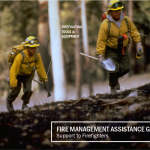Following is a summary of key federal disaster aid programs that can be made available as needed and warranted under President Obama’s disaster declaration issued for the State of Texas.
Assistance for Affected Individuals and Families Can Include as Required:
- Rental payments for temporary housing for those whose homes are unlivable. Initial assistance may be provided for up to three months for homeowners and at least one month for renters. Assistance may be extended if requested after the initial period based on a review of individual applicant requirements. (Source: FEMA funded and administered.)
- Grants for home repairs and replacement of essential household items not covered by insurance to make damaged dwellings safe, sanitary and functional. (Source: FEMA funded and administered.)
- Grants to replace personal property and help meet medical, dental, funeral, transportation and other serious disaster-related needs not covered by insurance or other federal, state and charitable aid programs. (Source: FEMA funded at 75 percent of total eligible costs; 25 percent funded by the state.)
- Unemployment payments up to 26 weeks for workers who temporarily lost jobs because of the disaster and who do not qualify for state benefits, such as self-employed individuals. (Source: FEMA funded; state administered.)
- Low-interest loans to cover residential losses not fully compensated by insurance. Loans available up to $200,000 for primary residence; $40,000 for personal property, including renter losses. Loans available up to $2 million for business property losses not fully compensated by insurance. (Source: U.S. Small Business Administration.)
- Loans up to $2 million for small businesses, small agricultural cooperatives and most private, non-profit organizations of all sizes that have suffered disaster-related cash flow problems and need funds for working capital to recover from the disaster’s adverse economic impact. This loan in combination with a property loss loan cannot exceed a total of $2 million. (Source: U.S. Small Business Administration.)
- Loans up to $500,000 for farmers, ranchers and aquaculture operators to cover production and property losses, excluding primary residence. (Source: Farm Service Agency, U.S. Dept. of Agriculture.)
- Other relief programs: Crisis counseling for those traumatized by the disaster; income tax assistance for filing casualty losses; advisory assistance for legal, veterans’ benefits and social security matters.
How to Apply for Assistance:
- Affected individuals and business owners in designated areas can begin the disaster application process by registering online at www.DisasterAssistance.gov or by calling 1-800-621-FEMA (3362) or by web enabled mobile device at m.fema.gov. Disaster assistance applicants, who have a speech disability or hearing loss and use TTY, should call 1-800-462-7585 directly; for those who use 711 or Video Relay Service (VRS), call 1-800-621-3362. The toll-free telephone numbers will operate from 7 a.m. to 10 p.m. (local time) seven days a week until further notice. Applicants registering for aid should be prepared to provide basic information about themselves (name, permanent address, phone number), insurance coverage and any other information to help substantiate losses.
FEMA’s mission is to support our citizens and first responders and ensure that as a nation we work together to build, sustain, and improve our capability to prepare for, protect against, respond to, recover from, and mitigate all hazards.
Stay informed of FEMA’s activities online: videos and podcasts available at www.fema.gov/medialibrary and www.youtube.com/fema ; follow us on Twitter at www.twitter.com/fema and on Facebook at www.facebook.com/fema.
Visit site:






